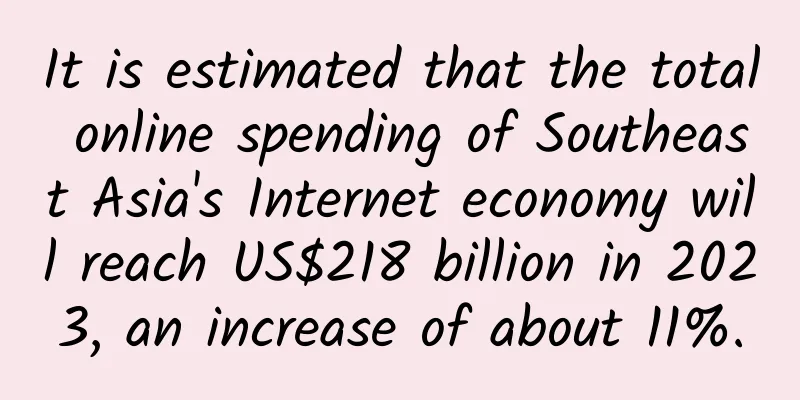It is estimated that the total online spending of Southeast Asia's Internet economy will reach US$218 billion in 2023, an increase of about 11%.

|
Southeast Asia’s internet economy is likely to grow at its slowest pace on record this year, a team of researchers said, slashing near-term estimates for e-commerce spending in the region by 13%.Total online spending in the region is expected to grow about 11% this year to $218 billion, but that would be a slowdown from 20% a year earlier and the lowest level since at least 2017, according to research from Google, Temasek and Bain & Co. The largest category, e-commerce, will reach just $186 billion by 2025, down from the researchers' previous estimate of $211 billion. The adjustment in expectations comes as consumers in the region of more than 650 million people are curbing spending to counter rising inflation and interest rates. At the same time, competition is intensifying. Global giants such as Amazon (AMZN.US) and Alibaba (BABA.US) as well as regional companies Grab (GRAB.US), Sea (SE.US) and GoTo Group are vying for market share from online retail to food delivery and ride-hailing services. The report said the region's entire internet economy will be worth $295 billion by 2025, down from a previous forecast of $330 billion. It was the second downward revision in the annual study, which covers Singapore, Indonesia, Malaysia, Thailand, Vietnam and the Philippines. Although more and more Southeast Asians use online services, most of the region's consumption still comes from relatively wealthy consumers in large cities. The top 30% of high-value users account for more than 70% of the value of digital economy transactions, the report said, suggesting that internet companies are struggling to attract potential customers in more remote areas. In addition, as investors become more selective and capital becomes more expensive, private financing of Southeast Asian companies has fallen to its lowest level in six years, a sharp slowdown from its peak during the pandemic. The report shows that in the first half of 2023, the number of transactions involving technology companies in the region more than halved from the same period last year to 564. Investors in the region, many of whom launched funds in the middle of the past decade, are facing increasing pressure to deliver returns in a challenging public listing market. The average return for funds launched in Southeast Asia over the past five to seven years was just 4%, compared with about 50% in China and 40% in the United States, according to the study. From cnBeta |
>>: Accenture: 2023 Holiday Shopping Survey
Recommend
The efficacy of traditional Chinese medicine fennel
In this environment where everyone pays attention...
The efficacy and function of Taibai Panax notoginseng
Traditional Chinese medicine is very effective in...
With fossils being unearthed one after another, China's "paleoanthropology" is becoming more and more "new"!
In July 2024, the China Association for Science a...
The efficacy and function of the bull throat tube
Niu Shengguan is a relatively familiar traditiona...
Traditional Chinese medicine formula for liver and kidney yin deficiency
There are a lot of patients suffering from liver ...
Matcha flavored mouthwash? It's not a hard job! It has many benefits!
Compiled by: Gong Zixin It is reported that accor...
Who is not suitable to eat Lingzhi powder?
Ganoderma lucidum is a very precious Chinese herb...
What are the effects of astragalus and red dates
In ancient times, people did not have the advance...
The efficacy and function of dog spine
Do you know Cibotium barometz? It is a common Chi...
KCI: 2023Q4 Consumer Survey Report
According to a survey by Kearney Consumer Researc...
China Payment and Clearing Association: In 2017, more than 160 billion non-cash payment transactions were handled nationwide
The China Payment and Clearing Association releas...
World Heart Day | "It's the heartbeat!" How much do you know about the heart?
Review expert: Peng Guoqiu, deputy chief physicia...
A hole was smashed into the concrete floor by a rat, and it became a popular check-in spot, with some people even paying coins...
Previously, a "rat" in Chicago, USA, be...
Nitrite is produced during the pickling process, so we can’t eat a single bite of kimchi?
Pickles are a traditional Chinese food. The most ...
What are the benefits of the split wood in walnuts?
In fact, many people do not agree with the effica...









